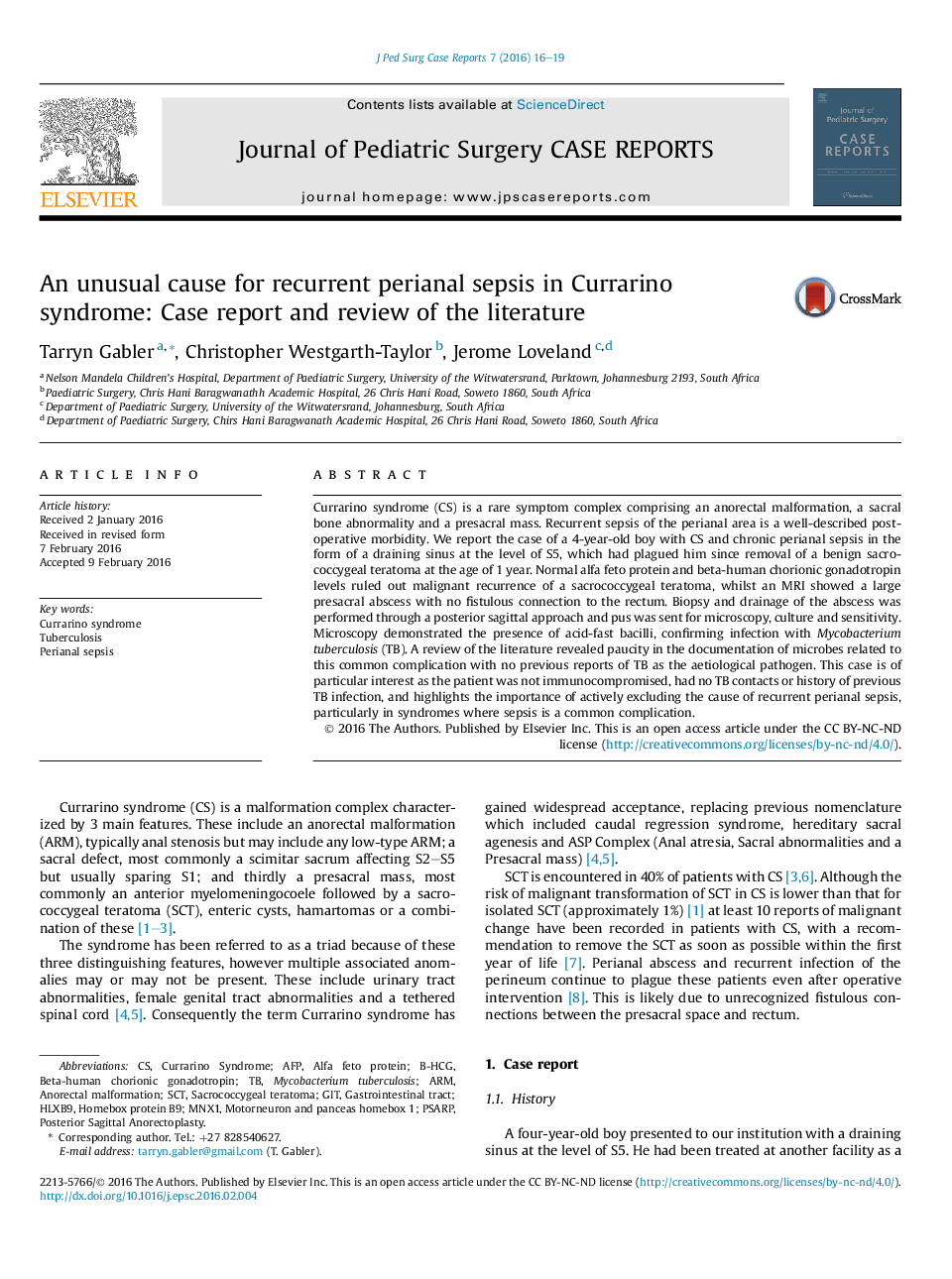| کد مقاله | کد نشریه | سال انتشار | مقاله انگلیسی | نسخه تمام متن |
|---|---|---|---|---|
| 4161195 | 1607126 | 2016 | 4 صفحه PDF | دانلود رایگان |
• Currarino syndrome (CS) is a rare symptom complex comprising an anorectal malformation, a sacral bone abnormality and a presacral mass.
• Post-operative perineal sepsis is a common morbidity in patients with CS.
• Extrapulmonary TB in an immunocompetent child without previous history of TB is an uncommon finding.
• It is important to actively seek the cause for recurrent sepsis, even in syndromes where sepsis is a common complication.
Currarino syndrome (CS) is a rare symptom complex comprising an anorectal malformation, a sacral bone abnormality and a presacral mass. Recurrent sepsis of the perianal area is a well-described post-operative morbidity. We report the case of a 4-year-old boy with CS and chronic perianal sepsis in the form of a draining sinus at the level of S5, which had plagued him since removal of a benign sacrococcygeal teratoma at the age of 1 year. Normal alfa feto protein and beta-human chorionic gonadotropin levels ruled out malignant recurrence of a sacrococcygeal teratoma, whilst an MRI showed a large presacral abscess with no fistulous connection to the rectum. Biopsy and drainage of the abscess was performed through a posterior sagittal approach and pus was sent for microscopy, culture and sensitivity. Microscopy demonstrated the presence of acid-fast bacilli, confirming infection with Mycobacterium tuberculosis (TB). A review of the literature revealed paucity in the documentation of microbes related to this common complication with no previous reports of TB as the aetiological pathogen. This case is of particular interest as the patient was not immunocompromised, had no TB contacts or history of previous TB infection, and highlights the importance of actively excluding the cause of recurrent perianal sepsis, particularly in syndromes where sepsis is a common complication.
Journal: Journal of Pediatric Surgery Case Reports - Volume 7, April 2016, Pages 16–19
